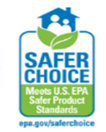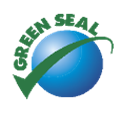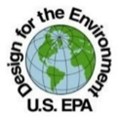Cleaning, sanitizing, and disinfecting surfaces are important steps to reduce the risk of spreading infectious diseases to children, staff, and visitors in early care and education programs. In most situations, routine cleaning with soap and water is enough to remove dirt and some germs from surfaces. Sanitizing and/or disinfecting may be needed after cleaning to further reduce the risk of spreading illness. Sanitizers and disinfectants must be applied to a clean surface to be effective at killing germs. You can find specific information on the label on how to use the product.
Adapted from Caring for Our Children: National Health and Safety Performance Standards, Appendix J
Refer to Schedule for Cleaning, Sanitizing, and Disinfecting.
| Activity | Type of Product | Method | Comments |
|---|---|---|---|
| Clean | Soap/detergent and water or an all-purpose cleaner that removes germs, dirt, oils, and sticky substances from surfaces or objects. | Wipe/mop surfaces (preferably with a microfiber cloth/mop) and rinse the surface thoroughly. Air dry or use a paper towel or microfiber cloth to dry. | If using a cleaner other than soap and water, choose a product that has safer chemical ingredients and is certified by a third party (e.g., Safer Choice, Green Seal, UL Ecologo). |
| Sanitize | Chemical product that reduces the number of most germs on non-porous surfaces or objects to a safe level. | Sanitize surfaces that touch food (e.g., dishes, cutting boards, mixed-use tables) or objects that a child might place in their mouth, like toys. | Choose an EPA-registered product with directions for food-contact surfaces on the label. |
| Disinfect | Chemical product that kills bacteria and viruses on surfaces or objects Disinfect equipment and surfaces used for toileting or diapering and in cleaning body fluids, like blood. | Allow disinfectant to sit on the surface and be visibly wet for the number of minutes listed on the product label. | Choose a disinfectant product certified by the EPA’s Design for the Environment program. |
Detailed definitions of Clean, Sanitize, Disinfect, and Germs (microbes) that can cause disease are in the CFOC Online Glossary.
Products Registered with the EPA
Sanitizers are products that kill bacteria on surfaces, and disinfectants are products that kill bacteria and viruses on surfaces. Sanitizers and disinfectants are registered with the EPA as antimicrobial pesticides. A product with an EPA registration number on the label has been through testing and is effective in reducing or killing germs.
Cleaners, sanitizers, and disinfectants have different purposes. Always choose the least hazardous and most effective chemical. Some products both sanitize and disinfect, and there are different concentrations and/or amounts of time the product needs to sit on a surface to work effectively.
Before choosing a cleaning or antimicrobial product, you will need to know whether the surface needs to be cleaned, sanitized, or disinfected. Pay careful attention to words on the label like “Warning” or “Danger,” and labels that point out if there is a hazard in using the product.
Follow the manufacturer’s instructions for use and safe handling of products. This includes:
1. How to clean before using a sanitize or cleaning product
2. How long the product needs to stay visibly wet on the surface or item (contact or dwell time)
3. Whether the product should be diluted or used as is
4. If rinsing is necessary after the contact time or if it can air dry
5. How to apply the product to surfaces, carefully considering whether the early childhood program can follow all the precautions listed
Unless the product label specifically includes disinfection directions for fogging, fumigation, wide-area or electrostatic spraying, the EPA does not recommend using these methods to apply disinfectants. The EPA has not evaluated the product’s safety and efficacy for methods that are not on the label.
Choosing Safer Products: Safety Data Sheet (SDS)
EPA-registered products have the SDS that gives instructions for safe use of the product, hazardous chemical ingredients, how to clean up spills, and first-aid response to chemical exposure. The SDS also describes what type of personal protective equipment (PPE) is necessary. PPE such as chemical-resistant gloves (nitrile and rubber are best), masks, and goggles may be needed while working with chemicals. It is best to use products that need little or no PPE.
According to the Occupational Health and Safety Administration (OSHA) Hazard Communication Standard, employers must keep the SDS on site for all hazardous cleaning products, and the SDS must be available to employees when they ask for it. By law, all employees must receive training upon being hired and once each year on how to use chemicals safely in their workplace.
Labeling Requirements
All containers of cleaning products and chemicals must have labels that display their contents and any hazards. Original labels must be kept on the containers of cleaning products.
When you take a cleaning product out of the original container and put it into another container, such as a spray bottle, this is a secondary container. The secondary container products must be labeled with:
- Name of the product and/or chemicals
- Warnings for health hazards (e.g., eye, ear, skin, respiratory)
- Physical hazards (e.g., flammable)
- Name and address of chemical manufacturer
You can buy preprinted labels, which make it easier to meet this requirement.
Indoor Air Quality and Ventilation
Cleaning, sanitizing, and disinfecting products can increase indoor air pollution. Mists, vapors, and other gases from cleaning chemicals can irritate the eyes, nose, throat, and lungs. It is important to ensure ventilation systems are working properly to reduce the concentration of chemicals indoors. Opening windows or doors allows for natural ventilation. Either way, good ventilation reduces the spread of airborne germs.
Protecting Staff and Children’s Health
Children are more sensitive to chemicals than adults because their bodies and organs are still developing. Children are at a higher risk for exposure to chemicals because they play on the floor, put toys in their mouths, and put their hands in their mouths. Adults may also be sensitive to chemicals, such as pregnant women and individuals with asthma or other respiratory issues. Exposure to some cleaning and disinfecting products has been shown to trigger asthma and can contribute to respiratory illnesses. Using products with safer ingredients helps reduce exposure and related health concerns such as damaged skin, cancer, and reproductive health harm. Safer products also protect the environment since toxic chemicals are often disposed in our waterways and soil.
Safer Products Options
The use of products that have safer (less toxic) chemicals help reduce health and environmental concerns. Manufacturers may claim that their products are “green,” natural, or earth-friendly, but these claims are often misleading and might not be related to a chemical’s safety.
Organizations now certify and label products that meet certain health and environmental standards.
For cleaning products, the main Third Party Certifications logos include:
| Cleaning Product | Logo | Website Link |
|---|---|---|
| Safer Choice is an EPA Pollution Prevention (P2) program that recognizes more than 2,700 products, including cleaners, hand soaps, laundry detergents, and floor care products. |  | Safer Choice | US EPA |
| Green Seal certifies thousands of products (e.g., cleaners, hand soaps, paper products, floor care products) with no harmful chemicals, sustainable packaging, and availability in a concentrated form. |  | Standards | Green Seal |
| UL ECOLOGO® certifies cleaners, floor care products, laundry detergents, hand soaps, paper products, and industrial wipes. |  | ECOLOGO® Certification Program | UL |
For sanitizing and disinfecting products, the only certification logo is:
| EPA’s Design for the Environment (DfE): Disinfectants program identifies antimicrobial products that are better for health and the environment. Sanitizers and disinfectants that meet EPA standards have ingredients such as hydrogen peroxide, lactic acid, citric acid, isopropanol, and ethanol. |  | DfE-Certified Disinfectant Pesticide Labels | US EPA |
Resources to Help You Choose Sanitizing and Disinfecting Products
- Cleaning and Disinfecting Best Practices During the COVID-19 Pandemic, Environmental Protection Agency (EPA)
- About List N: Disinfectants for Coronavirus (COVID-19), EPA
- Infographic: Guidance for Cleaning & Disinfecting Public Spaces, Workplaces, Businesses, Schools, and Home, EPA
- Safer Cleaning, Sanitizing and Disinfecting Strategies to Reduce and Prevent COVID-19 Transmission, University of Washington School of Public Health
Bleach Products
Early childhood programs often use bleach to sanitize and disinfect. EPA-registered bleach products are described as sanitizers and disinfectants. Make sure your bleach product’s label has an EPA registration number. Bleach typically is sold in concentrations that have 5.25% to 8.25% sodium hypochlorite. Read the label to find the concentration of sodium hypochlorite in the product and follow instructions to prepare the bleach solution.
Care is needed to prepare and use bleach products safely. Bleach is toxic when swallowed and can lead to serious injury and even death. Bleach that is released into the air can both aggravate and trigger asthma and irritate the skin and eyes. Because their lungs are still developing, children are especially at risk of having their lungs irritated when bleach is in in the air they breathe.
To safely prepare bleach solutions:
- Store bleach at room temperature of 70°F or cooler and keep out of direct sunlight.
- Properly stored bleach has a shelf life of no more than 1 year from the manufacturing date.
- Never mix or store bleach with ANY other chemicals.
- Make sure the room is well ventilated.
- Choose a bottle made of opaque material.
- Choose pump sprays that have a stream option. Avoid aerosols and foggers; both can spread tiny particles that stay in the air long after being used and get deep into the lungs.
- Wear gloves and eye protection when preparing the bleach solution.
- Use a funnel to pour bleach.
- Add bleach to the water (rather than water to the bleach) to reduce fumes.
- Dilute bleach with cool water, and don’t use more than the recommended amount of bleach.
- Make a fresh bleach solution daily and label the bottle with the contents and the date mixed. Bleach strength rapidly gets weaker in the presence of light and when mixed with water.
To safely use bleach solutions:
- Use when children are not in the area.
- Clean the surface or items with soap and water. Rinse and dry the surface before applying the bleach solution.
- Allow solution to stay wet on the surface for the contact time on the label.
- Ventilate the area by allowing fresh air to circulate and allow surfaces to completely air dry (or wipe dry) after the required contact time before allowing children back into the area.
- Safely store chemicals out of reach of children and be sure they will not tip or spill.
Using diluted bleach in a spray bottle creates droplets that can be inhaled. Using microfiber or cloths soaked in the bleach solution creates the least amount of bleach released into the air. People with asthma should avoid using bleach and stay away from areas where bleach is being used.
Tools and Tips for Cleaning, Sanitizing, and Disinfecting
| Tools and Tips | Overview |
|---|---|
| Microfiber cloths and mops CFOC 5.6.0.4 |
|
| Washing and sanitizing dishes and toys CFOC 3.3.0.2; 4.9.0.11; 4.9.0.13 | Dishwasher
3-sink Method
|
| Washing machine and laundry CFOC 5.4.4.2 |
|
| Use of floor mats |
|
| Vacuums with HEPA filters (High-Efficiency Particulate Air) CFOC 5.3.1.4 |
|
| Proper ventilation CFOC 5.2.1.1 |
|
| Carpeting tips CFOC 5.3.1.4; 5.3.1.6 |
|
| Chemical-free cleaning systems |
|
Additional Resources
- Identifying Greener Cleaning Products, EPA
- Green Cleaning, Sanitizing and Disinfecting: A Toolkit for Early Care and Education - Western States Pediatric Environmental Health Specialty Unit, Western States Pediatric Environmental Health Specialty Unit (University of California, San Francisco)
- Informed Green Solutions
- UCSF California Childcare Health Program
- UCSF California Childcare Health Program Posters (available in English, Spanish, and Chinese)
- When and How to Clean and Disinfect a Facility, Centers for Disease Control and Prevention
- Protecting Workers Who Use Cleaning Chemicals, OSHA-NIOSH
Last Updated: February 13, 2025


